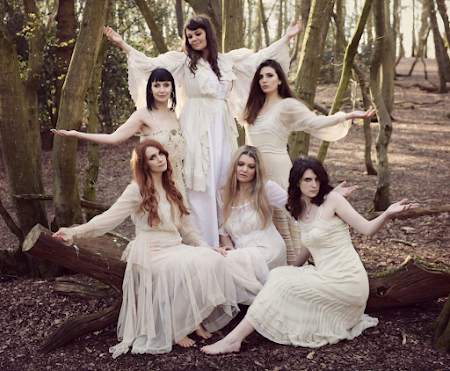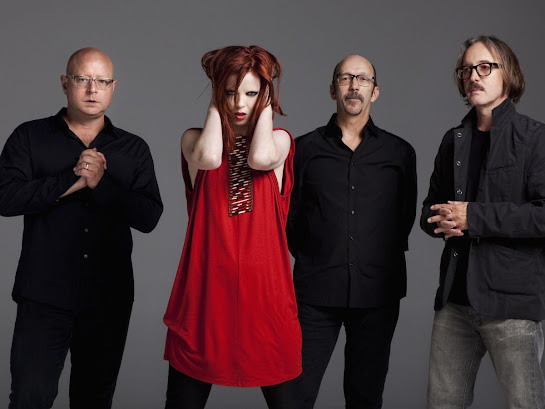Part 1
Part 2
#Mediaeval Baebes #medieval music #choral music #traditional #crossover #a capella #vocal ensemble #ex-Miranda Sex Garden #live music video
Mediaeval Baebes have been called classic music's Spice Girls and early music Pussy Cat Dolls for their sexy contemporary approach to medieval music. Katherine Blake founded the group in 1996 after she left the goth music group Miranda Sex Garden. Katherine explains, "One of the inspirations for forming the Baebes was my participation in (another) Mediaeval ensemble called Synfonie, performing mostly Hildegard plainsong. The group also introduced me to a song called Salva Nos which I performed in a cabaret in Berlin. That song was the first we ever sang together and also the name of the first album we made." After returning to England she called her girl friends together and taught them the song then outlined her vision for an all female choral group. Her timing couldn't have been better. The music scene which had been dominated by male groups was about to be kicked over by a new breed of gutsy female vocalists starting with the Spice Girls. Even before the Spice Girls’ first album was released, the Mediaeval Baebes were working up enough songs for their first concert, which was held in a cemetery. Soon they made a demo tape and sent it off with high hopes but low expectations. Within days they were signed by Virgin Records sight unseen. The executives must have died and gone to heaven when they saw the Baebes for the first time and realized what a sizzling effect these young, sexy women in flowing white gowns produced on their audience as they wove an enchanting tapestry of heavenly music.
In the years that followed they have produced six albums, a live performance DVD, a songbook, a book of erotic art called Songs of the Flesh, and have toured all of Great Britain, Europe, and North America. In the USA they toured with Lilith Fair where they developed quite a reputation for pranks. Rachael Van Asch, the band's only blond, recalls those days, "like when our drummer boys Hans and Trevor dressed up in our spare long white dresses with full make-up and came onstage with us on Lilith Fair to perform the closing number with Sarah Maclaughlin." The band swelled to thirteen women at one time and now has settled on just seven voices, Katherine Blake (music director), Audrey Evans, Emily Ovenden, Marie Findley, Maple Bee, Cylindra, and Rebecca Dutton. The Baebes are all talented individuals, so the band makes time for everyone to develop personal projects.
Rachael, who left the band in 2004 to get married and have a baby, grew up in rock music. Her mother was a member of New Zealand band Ragnarock. For eight years Rachel Van Asch performed and served as costume designer for the Baebes. Rachael has also produced fashion clothes based on her costume designs under the labels Sacred Clothing and Van Asch. Now she is in the process of moving to Sweden where she will be opening a clothing store.
Audrey Evans has been with the band since the beginning but when she isn't performing she teaches in a nursery school. In November of 2005 she also gave birth to a son, Lewis, who is the love of her life.
Emily Ovenden is the daughter of famous English Ruralist artists Graham & Annie Ovenden but her talents are manifested in music and writing. She has written and published one book, Vulpes Vulpes, and has just finished her second novel, The Ice Room. Currently she is working on songs for an upcoming Celtic album.
Maple Bee, the dark haired mezzo soprano, joined the band in 2003. She spent her childhood on board a yacht, traveling the world and living in the Middle East. She has made two techno solo albums and just released a new dance album, Huski.
Mediaeval Baebes celebrated an important anniversary in May this year. Maple Bee tells, "the Baebes had their 10th anniversary party which involved lots of singing loudly in a pub called the Boogaloo on Highgate Hill, followed by lots of strange baebeish antics and fake champagne." In June, she says, they performed at "an amazing show in Cornwall inside a real life stalactite-ridden cave called Carnglaze Caverns - then on to the sunrise festival near Glastonbury.”
From: https://stores.renstore.com/art-and-music/mediaeval-baebes




























